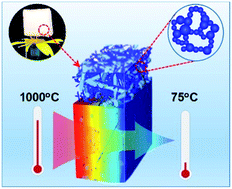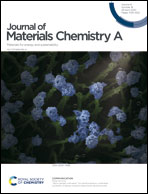Temperature-invariant superelastic, fatigue resistant, and binary-network structured silica nanofibrous aerogels for thermal superinsulation†
Abstract
Industrial thermal energy management or space exploration requires thermal insulating materials with features of low thermal conductivity, low bulk density and robust mechanical properties. However, the use of traditional organic insulation materials is hampered by their poor fire resistance while inorganic insulation ones are either stiff or display a high thermal conductivity. Herein, we design and synthesize binary-network structured silica nanofibrous aerogels (BSAs) by in situ assembly of nanoporous silica aerogels on a cellular structured silica fibrous framework. The resulting BSAs can completely recover from 80% compressive strain, displaying temperature-invariant superelasticity and robust fatigue-resistance up to 100 000 compression-release cycles. Moreover, the unique binary-network structure provides BSAs with ultralow thermal conductivity (21.96 mW m−1 K−1), robust fire retardancy, and superior high-temperature thermal insulation performance. BSAs with a thickness of 20 mm are shown to protect bare hands placed on the opposite side, when directly exposed to butane blowtorch flame (∼1000 °C). These superior performances lead to their appealing practical application potential in energy management, thermal isolation or fire protection fields.



 Please wait while we load your content...
Please wait while we load your content...